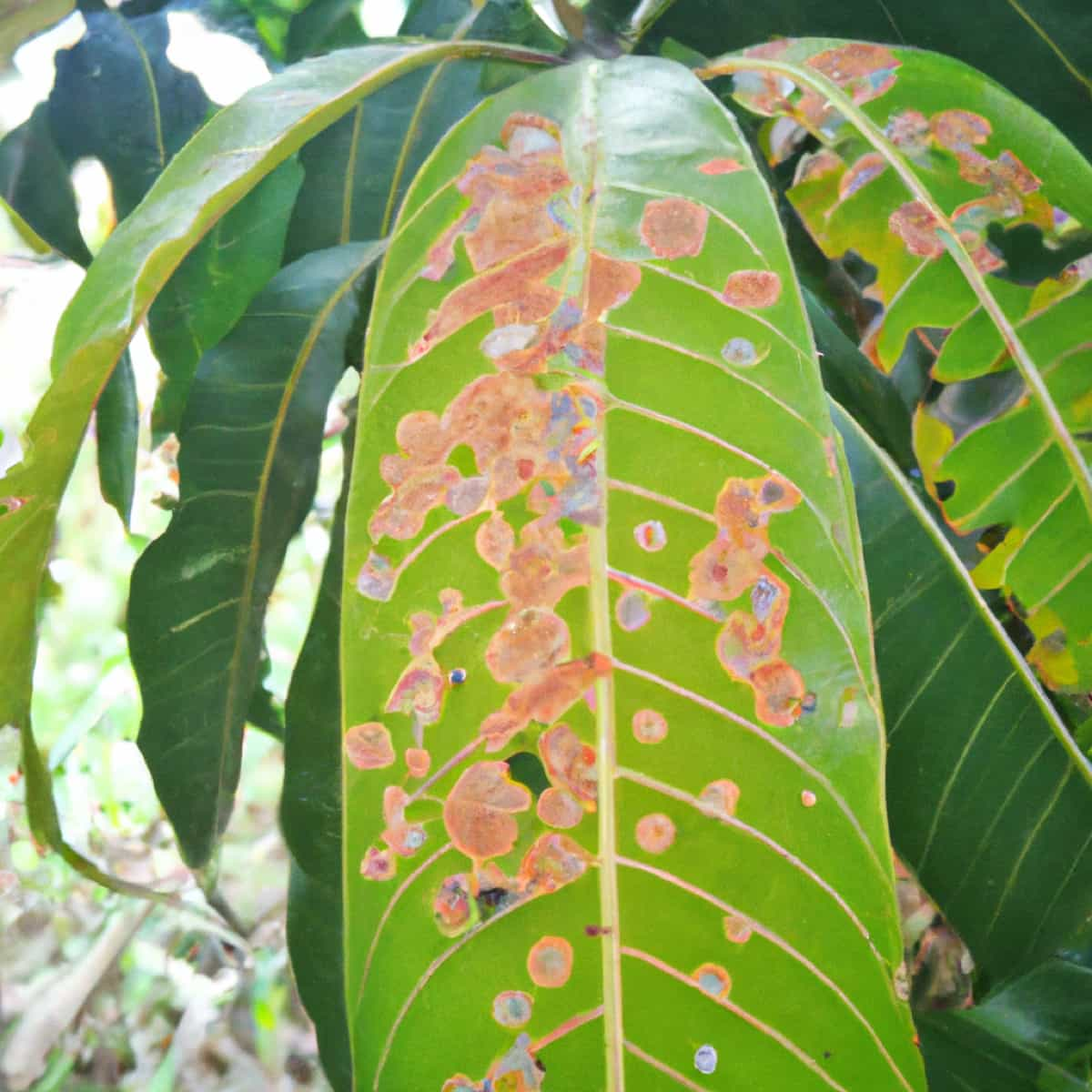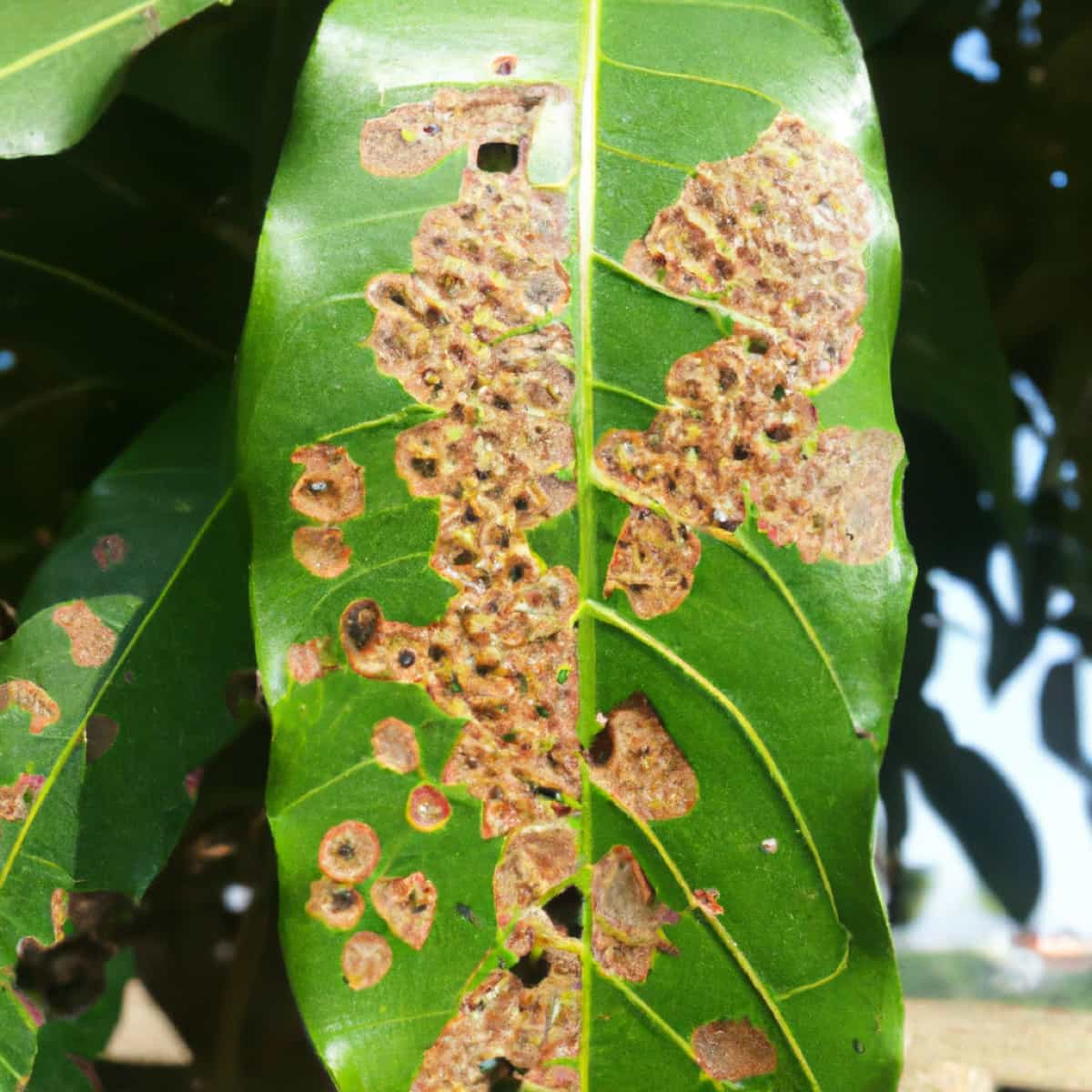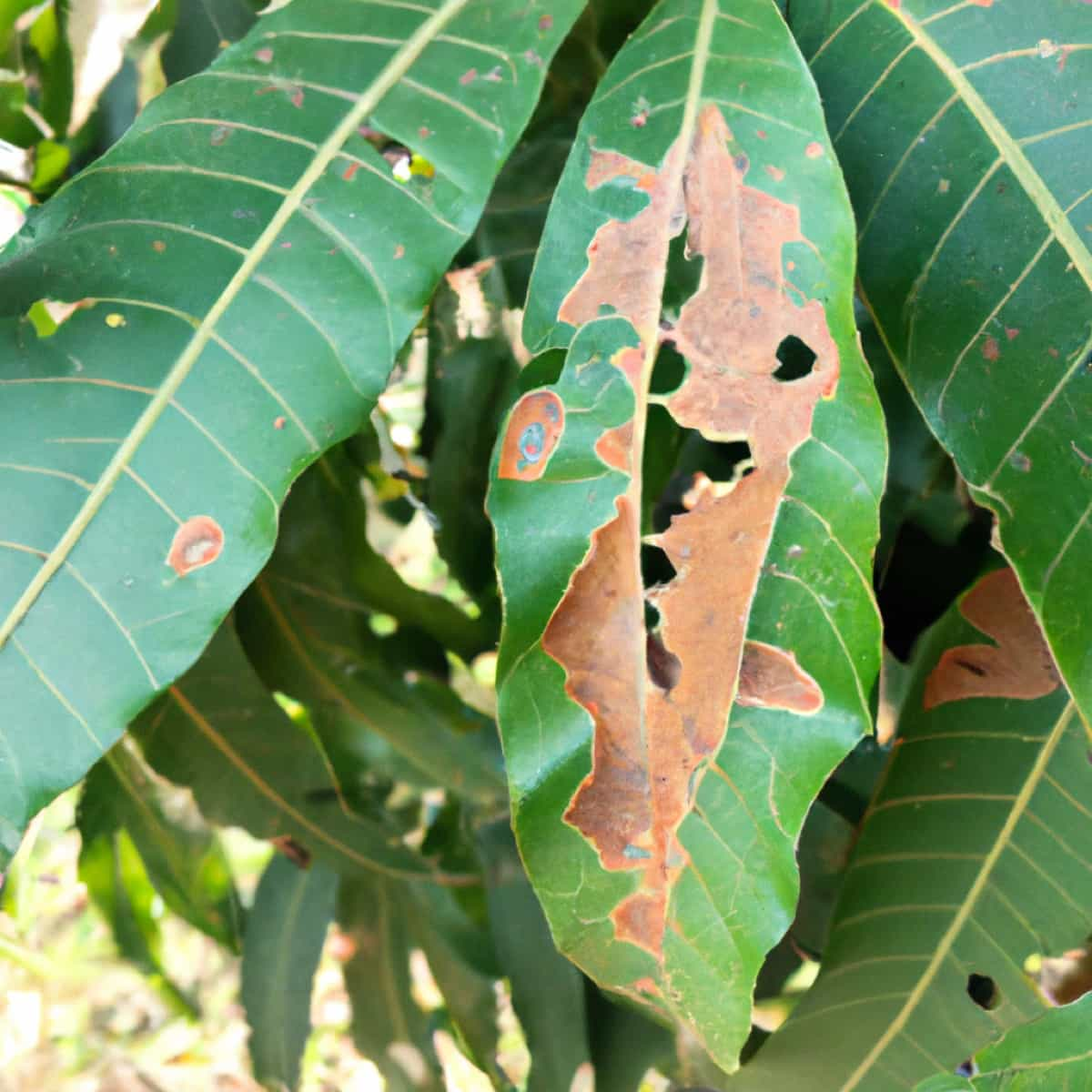The Mango Bacterial Canker Disease is caused by the bacterium Xanthomonas campestris pv. Mangiferae indicae, also known as the leaf spot disease of mango, is a significant threat to mango crops worldwide. Mango is an economically important fruit crop grown in many parts of the world, with India being the largest producer, followed by China, Thailand, and Mexico.

This disease can cause significant yield losses, affecting fruit quality and quantity globally. Rain splashes, irrigation water, infected plant material, and contaminated pruning tools spread the bacteria. The control of Mango Bacterial Canker Disease is challenging due to its rapid spread and the lack of effective chemical control measures.
As a result, preventive measures and cultural practices are critical in managing the disease. To effectively manage this disease, it is essential to understand its disease cycle, the mode of disease spread, and the best methods for controlling it. This article will provide an overview and discussion of the Mango Bacterial Canker Disease in Mango crops, including its symptoms, identification techniques, and control.
Mango Bacterial Canker Disease Management
The Causal Organism of Mango Bacterial Canker Disease
- Xanthomonas campestris is a facultative anaerobic, gram-negative bacterium that belongs to the Family Xanthomonadaceae of Order Xanthomonadales of the Phylum Pseudomonadota.
- The bacterium is 0.5 to 1.0 micrometers in diameter, rod-shaped and motile, with a single polar flagellum.
The Disease Cycle of Mango Bacterial Canker Disease
The disease cycle of the Mango Bacterial Canker Disease, Xanthomonas campestris, in Mango Crops starts from the foliage or floral parts and then spreads to the other parts of the plant. The bacteria infect the plant through natural openings or wounds, such as insect feeding sites, pruning cuts, or mechanical damage. It colonizes the intercellular spaces of the plant tissues, where it multiplies and spreads.
The bacterium produces a range of virulence factors, including extracellular polysaccharides like xantha gum, toxins, and enzymes, which facilitate colonization and cause disease symptoms. The bacterium produces water-soaked lesions and cankers and causes defoliation, fruit drop, stunted growth, and tree death. The cankers may ooze a bacterial exudate that dries to form a crust and can contain large numbers of bacteria, thus providing a source of inoculum for the disease.
Once the bacterium has colonized a host plant, it can be spread by various means, including rain, wind, insects, and contaminated tools. The disease can also be spread through irrigation water, facilitating the movement of the bacteria from infected to healthy plants completing its disease cycle.
Occurrence of Mango Bacterial Canker Disease in Mango Crop
- Location of Mango Bacterial Canker disease: This disease occurs in mango crops in India, Africa, Bangladesh, Sri Lanka, Thailand, the Philippines, the United States, Mexico, Brazil, and Australia.
- Host range: The most common crops affected by Xanthomonas campestris are mango, papaya, tomato, pepper, and citrus crops like oranges, grapes, and avocado.
Favorable Conditions for Mango Bacterial Canker Disease Spread in the Field
- Warm and humid conditions, with temperatures between 27-32°C, high humidity, and heavy rainfalls, are ideal for bacterial growth.
- The bacteria can enter and infect the trees with wounds or injuries and are more susceptible to Mango Bacterial Canker Disease.
- Poor orchard hygiene can create conditions that favor the spread of the disease. Infected plant debris, pruning tools, and contaminated irrigation water can all contribute to the spread of the disease.
- High-density planting, trees planted too closely together create a dense canopy, which can trap moisture and create humid conditions that favor the disease.
- Lack of proper management practices, such as timely pruning and removal of diseased plant parts, can lead to the rapid spread of the disease.
In case you missed it: Mango Dieback Disease Management: Symptoms, Treatment, Chemical, Biological, Natural, and Organic Control

Damage Symptoms of Mango Bacterial Canker Disease
- The disease is characterized by the development of dark, water-soaked lesions on leaves, petioles, twigs, branches, fruits, and stems, eventually becoming necrotic and leading to premature defoliation and fruit drop.
- Initially, the disease occurs as yellow halos on the leaf lamina surround tiny water-soaked irregular lesions.
- These lesions coalesce to form irregular, raised, necrotic canker patches on the leaves.
- In severe infections, the leaves show cankers along the midrib, yellowing symptoms, and drop off prematurely.
- These spots on the branches and fruits burst open and release a gummy ooze that contains highly contagious bacterial cells.
- The disease can also cause the formation of cankers on the mango tree’s flowers, fruits, branches, and trunks, leading to flower and fruit drops, stunted growth, and, ultimately, tree death.
Percentage of Yield Loss due to Mango Bacterial Canker Disease in Mango Crop
- The disease can cause 40% yield losses in the United States. In Mexico, yield losses are 60%. In India, the yield losses are at 50%. In Bangladesh, the losses are 30-70%. In China, a 50% yield loss is seen.
- In Africa, yield losses are 70%. In the Philippines, it is 50%. In Thailand, it is 70%. In Brazil, it is 50%. In Australia, the losses are 50%. The Economic Threshold Level is determined at 10% of yield losses.
Cultural Control Measures of Mango Bacterial Canker Disease
- Proper orchard sanitation is critical for preventing the spread of the disease. Infected plant debris, pruned branches, and other parts should be collected and destroyed. Regular cleaning of tools and equipment used in the orchard is also necessary.
- Planting non-host crops in the orchard can reduce the number of bacteria in the soil and minimize the risk of spreading disease.
- Over-fertilization can cause excessive vegetative growth, creating conditions that favor the disease. Balanced fertilization can help maintain healthy trees and reduce the risk of disease incidence.
- Pruning can remove diseased plant parts, improve air circulation, and reduce the overall stress on the tree, inhibiting bacterial growth and spread.
- Overhead irrigation can spread the bacteria through rain splashes, while drip irrigation can help prevent the spread of the disease.
Biological Control measures of Mango Bacterial Canker Disease
- Antagonistic microorganisms such as Bacillus subtilis, Pseudomonas aeruginosa, and Streptomyces sp. produce compounds that can inhibit the growth of the disease-causing pathogen and enhance plant growth.
- Trichoderma is a soil-borne fungus that can help suppress the disease by producing the enzymes that can break down the cell walls of the disease-causing pathogen, leading to its death.
- Predatory insects such as lady beetles, lacewings, and parasitic wasps control the insect population that transmit the disease-causing pathogen.
- Biocontrol agents like bacteriophages, viruses that infect and kill the disease-causing bacteria, and biocontrol products containing plant extracts and beneficial microorganisms.
Chemical Control Measures of Mango Bacterial Canker Disease
- Spray Streptocycline or Agrimycin immediately after noticing the disease at 10-day intervals for a month, followed by Carbendazim or Copper Oxychloride at 30-day intervals to control the bacterial spread.
- Prune the diseased leaves and Spray Streptomycin sulfate to control the bacterial canker disease.
Organic Control Measures of Mango Bacterial Canker Disease
- Biofertilizers such as Azotobacter, Azospirillum, and Rhizobium can improve soil fertility and stimulate plant growth, which can help reduce the disease incidence.
- Plant extracts, such as extracts from neem, ginger, garlic, and turmeric leaves, are used as foliar spray or soil drench to suppress the disease.
- Collect the diseased leaves and debris from the orchard and burn them far away from the field to control the disease spread.
Preventive Measures for Control of Mango Bacterial Canker Disease
- Select standard and certified seedlings to prevent disease incidence.
- Regularly monitoring the crops for signs of disease will help to find and manage the disease early before it spreads.
- Always use sterilized and disinfected pruning equipment to prevent the spread of the disease to new trees.
In case you missed it: Mango Grey Blight Disease Management: Symptoms, Treatment, Chemical, Biological, and Organic Control

Conclusion
The Mango Bacterial Canker Disease caused by Xanthomonas campestris is a devastating disease of mango crops worldwide. The disease is challenging to manage due to its high infection rate, and there is no complete cure once a tree is infected. However, integrated disease management practices can help control the disease effectively.
It involves a combination of various control measures, such as cultural, chemical, and biological control methods, to manage the disease. Raising awareness among farmers, researchers, and other stakeholders is crucial to implementing sustainable and eco-friendly measures to manage this disease and ensure the sustainable production of crops.
- Deworming Schedule for Dogs/Puppies: A Beginners Guide
- How to Prevent and Control Parasites in Goats
- Beneficial Insects in Pest Management
- Natural Solutions for Pest Control in Flower Gardens
- Types of Fungicides Used in Agriculture
- Common Issues in the Fruit Development Stage of Pomegranate Farming
- Fruit Development Issues in Papaya: Easy Solutions and Treatment
- Soil-Borne Diseases and How to Protect Your Plants
- Practices to Prevent Disease Spread in the Garden